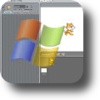Explore the solar system in real time
Explore the solar system in real time
Vote: (13 votes)
Program license: Free
Developer: Openuniverse
Version: 1.0
Works under: Windows
Vote:
Program license
(13 votes)
Free
Developer
Version
Openuniverse
1.0
Works under:
Windows
Pros
- Real-time simulation of the solar system and cosmos
- Useful labeling of celestial bodies and constellations
- Open-source platform encourages community involvement
- Zoom function allows for up-close exploration of planets and stars
- Valuable educational tool for teaching astronomy
Cons
- Graphics may be considered basic compared to modern simulators
- Interface might not appeal to users looking for more sophisticated visuals
- Potential learning curve for navigating and utilizing advanced features
Explore the Cosmos with OpenUniverse
Intended for astronomy aficionados and educators alike, OpenUniverse is an open-source software designed to simulate the Solar System and the larger cosmos in a dynamic and interactive manner. The software, which has evolved from its earlier avatar as the Solar System Simulator (Ssystem) created in 1997, now offers a broader virtual representation of the universe.
Real-time Space Simulation
OpenUniverse stands out because it focuses on providing a real-time experience of space. This differentiates it from many other astronomy simulation tools, which primarily rely on static models to represent celestial phenomena. Users can observe the positioning of planets, moons, and stars as they are at the current moment, which adds an element of immediacy and authenticity to one's exploration of the cosmos.
User Experience and Accessibility
This software caters to those with a keen interest in understanding and teaching about space. OpenUniverse allows you to visualize the Earth from the perspective of the Sun, effortlessly zoom into planetary surfaces, and closely examine distant stars. One of the more educational features is the labeling system, which helps users identify constellations and celestial bodies without the need for an external reference.
Graphics and Visuals
Although the graphics in OpenUniverse may not compete with more modern space simulators, they are functional and serve the educational purpose of the tool. Planetary representations and stellar images might appear somewhat simplistic, with stars occasionally resembling mere white blotches on the virtual sky. However, the visuals are sufficient for users to gain a conceptual understanding of the universe's layout and construct.
Open Source and Community Driven
A key aspect of OpenUniverse is its open-source nature. The 'Open' in its name is not just symbolic; it's an invitation to developers and astronomy enthusiasts to participate in its development actively. This collaborative approach ensures continuous improvement, updates, and potential customizations from the community, which can enhance the software's functionality and educational value over time.
Comparison with Other Tools
While Google Earth's Space Exploration feature is a cited reference point, OpenUniverse undoubtedly offers a more in-depth and concentrated focus on space alone. Its dedicated purpose as an astronomy tool means that it provides more specialized functions for exploring and understanding the universe without the broad geographical scope of Google Earth.
Learning Potential and Usability
As a teaching aid, OpenUniverse is highly commendable. Despite its rather basic visual presentation, the software excels as an interactive learning tool. Educators can employ this simulator to provide students with a tactile and engaging method to study astronomy, potentially igniting their interest in the science of space further.
Conclusion
In sum, OpenUniverse is a project imbued with potential, particularly for those with a hearty appetite for space and celestial education. It successfully provides a real-time doorway to the cosmos, empowering users with the ability to explore and learn about our Solar System and beyond. While it may lack the high-end graphics of newer simulators, its strengths undeniably lie in its educational value, accessibility, and the ongoing potential for enhancements from its open-source community.
Pros
- Real-time simulation of the solar system and cosmos
- Useful labeling of celestial bodies and constellations
- Open-source platform encourages community involvement
- Zoom function allows for up-close exploration of planets and stars
- Valuable educational tool for teaching astronomy
Cons
- Graphics may be considered basic compared to modern simulators
- Interface might not appeal to users looking for more sophisticated visuals
- Potential learning curve for navigating and utilizing advanced features




